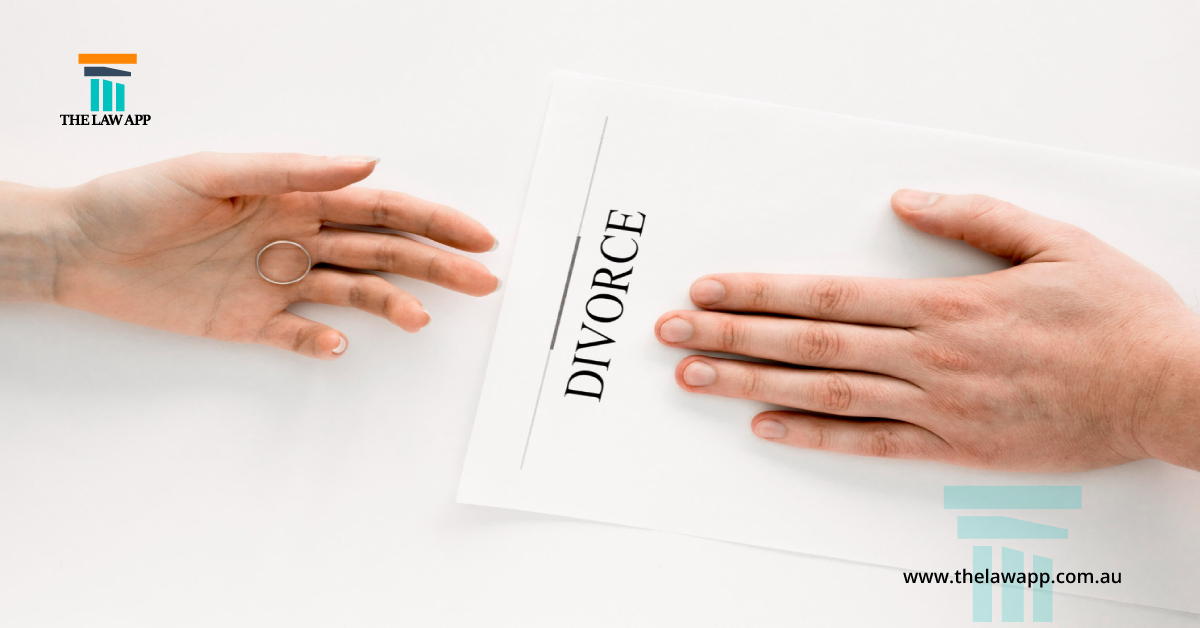
In a world where DIY solutions are on the rise, a DIY Divorce Kit QLD offers individuals in Queensland the opportunity to navigate the often challenging process of divorce independently. This comprehensive guide is designed to simplify the complexities of divorce and provide a clear, step-by-step path towards a smoother separation. Let’s delve into the importance of such a kit and the benefits it offers to those in need of a divorce in the Sunshine State.
 Divorce can be a daunting journey, especially when faced with the intricacies of Queensland’s legal landscape. A DIY Divorce Kit QLD serves as a compass, helping individuals understand the divorce process from start to finish. It simplifies the legal jargon, clarifies the necessary documentation, and offers insights into the timeline for each step.
Divorce can be a daunting journey, especially when faced with the intricacies of Queensland’s legal landscape. A DIY Divorce Kit QLD serves as a compass, helping individuals understand the divorce process from start to finish. It simplifies the legal jargon, clarifies the necessary documentation, and offers insights into the timeline for each step.
The heart of the DIY Divorce Kit QLD is its step-by-step guide. This comprehensive resource breaks down the divorce process into manageable chunks, ensuring that individuals don’t feel overwhelmed by the numerous legal requirements and paperwork involved. Whether it’s filling out forms, serving divorce papers, or navigating child custody issues, the guide provides clear instructions at each juncture.
A DIY Divorce Kit QLD serves as a valuable resource for those seeking a more straightforward and cost-effective way to navigate the complexities of divorce in Queensland. With its step-by-step guidance and array of benefits, it empowers individuals to take charge of their divorce proceedings, ensuring a smoother separation tailored to their specific needs. Whether due to financial concerns, the desire for privacy, or a wish for greater control, the DIY Divorce Kit QLD provides a pathway to a fresh start.
A divorce is a significant life event, and understanding the legal process involved is crucial when embarking on this journey in Queensland. This chapter offers a comprehensive overview of the divorce process, the legal requirements, and the vital role of proper documentation.
Queensland’s divorce process is governed by the Family Law Act 1975. To initiate a divorce, one or both spouses must establish that the marriage has irretrievably broken down. This is often demonstrated by a 12-month separation period, where the couple lives apart and separately. In Queensland, you can apply for a divorce whether you were married in the state, interstate, or overseas.
To file for divorce in Queensland, at least one of the parties must be a resident of the state or consider it their home. It’s important to note that the Court doesn’t consider the reasons behind the breakdown of the marriage, as Australia practices a no-fault divorce system. Instead, the focus is on the fact that the marriage has broken down irretrievably.
Proper documentation is the backbone of any divorce process. It’s essential to gather and organise the necessary paperwork to support your divorce application. These documents typically include:
Accurate, complete, and well-organised documentation is critical. Mistakes or omissions can lead to delays or complications in the divorce process. The Family Court of Australia emphasises the importance of preparing your documents meticulously to ensure a smooth process.
Understanding the Queensland divorce process, the legal requirements, and the significance of proper documentation is the first step in embarking on a successful divorce journey. With the knowledge and documentation in place, you’re better prepared to navigate the complexities that may arise during this significant life transition.
In the divorce process, having the right documentation is paramount. DIY Divorce Kit QLD guide is dedicated to helping you collect the crucial paperwork necessary for a smooth separation.
Accurate record-keeping is not just a convenience; it’s a necessity. Mistakes or incomplete documentation can lead to delays or complications in your divorce proceedings. It’s vital to provide a clear and truthful account of your marriage and separation to the Family Court of Australia. Inaccuracies can hinder the divorce process and may even have legal consequences.
By diligently gathering, organising, and verifying your essential documents, you’ll be well-prepared for the next steps in your Queensland divorce journey. This proactive approach will save you time, minimise stress, and ensure that your divorce application proceeds smoothly and efficiently.
One of the pivotal steps in your DIY divorce journey in Queensland is completing the divorce application form accurately and comprehensively. In this chapter, we’ll guide you through the process, help you steer clear of common pitfalls, and underscore the importance of honesty and precision.
Honesty and accuracy in your divorce application are paramount. You must provide truthful information regarding your marriage, separation, and jurisdiction. Deliberate falsehoods can have legal consequences. It’s important to remember that the court’s primary concern is to ensure the accuracy and fairness of the divorce process, and a transparent application is key to achieving this.
 By following these guidelines, you can successfully complete your divorce application form in Queensland, minimizing the risk of errors and ensuring that your application proceeds smoothly. Remember that honesty and precision are your allies in achieving a hassle-free DIY divorce.
By following these guidelines, you can successfully complete your divorce application form in Queensland, minimizing the risk of errors and ensuring that your application proceeds smoothly. Remember that honesty and precision are your allies in achieving a hassle-free DIY divorce.
Serving divorce papers on your spouse is a significant step in the Queensland divorce process. In this chapter, we’ll walk you through the process, offer solutions for difficult situations, and address the legal requirements involved in serving these documents.
Serving divorce papers, also known as service of process, involves providing your spouse with a copy of the divorce application and the accompanying documents. In Queensland, there are several methods to serve papers, including:
In some cases, serving divorce papers may be challenging, especially if your spouse is uncooperative, evasive, or difficult to locate. You may consider alternative methods, such as:
The Family Law Rules require strict compliance with service requirements. It is essential to:
Serving divorce papers is a crucial part of the divorce process, as it allows your spouse to respond to the application. Understanding the various methods, including alternative approaches for challenging situations, and adhering to the legal requirements for service will help you navigate this aspect of your DIY divorce in Queensland effectively.
We’ll guide you through what to do if you find yourself on the receiving end of divorce papers in Queensland. Understanding your options and the associated deadlines is crucial, as is recognisng the consequences of not responding.
If you receive divorce papers, it’s important not to panic. Here’s what to do:
Queensland’s legal system provides several options for responding to divorce papers:
Failing to respond to divorce papers can have serious consequences. If you don’t reply within the specified timeframe, the court may proceed without your input. This could lead to a divorce being granted and orders made without your participation, which may not align with your wishes or best interests.
Understanding your rights and options when responding to divorce papers in Queensland is crucial. Whether you choose to consent to the divorce, negotiate for consent orders, or contest the claims, it’s important to take action within the specified deadlines to protect your interests and ensure a fair and just outcome.
We’ll delve into the intricate process of handling property and asset division in Queensland divorces. We’ll provide guidance on how to navigate this phase, negotiate agreements, and emphasise the pivotal role of property settlements.
Queensland operates under a principle of ‘just and equitable’ property division, meaning that assets should be divided fairly based on individual circumstances. Marital property includes not only real estate but also vehicles, savings, investments, and personal belongings. Debts are also considered part of the equation. It’s essential to assess all assets and liabilities and establish their value to create a starting point for negotiations.
A property settlement is the final and binding resolution of asset and liability division between spouses. A formal property settlement eliminates any future claims on each other’s assets and provides legal closure to the financial aspects of the divorce. This step is significant as it ensures both parties can move forward independently, without the looming possibility of financial disputes.
 Navigating property and asset division in Queensland can be complex, but it’s a pivotal step in the divorce process. By approaching it with open communication, seeking legal advice, and understanding the role of a property settlement, you can ensure a fair and just division of assets, enabling both parties to move forward with financial independence.
Navigating property and asset division in Queensland can be complex, but it’s a pivotal step in the divorce process. By approaching it with open communication, seeking legal advice, and understanding the role of a property settlement, you can ensure a fair and just division of assets, enabling both parties to move forward with financial independence.
When it comes to divorce in Queensland, DIY Divorce Kit is dedicated to addressing the vital aspects of child custody and support. We’ll explain the considerations involved, emphasise the paramount importance of the child’s best interests, and provide guidance on reaching parenting arrangements through a parenting plan or consent orders.
Child custody and support arrangements involve several considerations, including:
The cornerstone of child custody and support is prioritising the child’s best interests. It’s essential to create a stable and nurturing environment that fosters the child’s well-being. This may include ensuring that they have access to both parents, that their education and health needs are met, and that their voice is heard in decisions affecting their life.
Navigating child custody and support during a divorce can be emotionally charged and complex. By focusing on the child’s best interests, considering the various aspects of custody and support, and choosing between a parenting plan or consent orders, you can create a stable and loving environment for your child, ensuring their well-being remains paramount throughout the divorce process.
As you reach the conclusion of your divorce journey in Queensland, it’s important to understand the final steps, the role of the court, and how to obtain your divorce certificate.
The finalisation of your divorce involves several key steps:
The court plays a pivotal role in finalising your divorce. It ensures the divorce application complies with the legal requirements, assesses the parenting arrangements for any children involved, and scrutinises property settlements. Delays can occur if there are issues with the application or if additional information is required.
The Certificate of Divorce is the conclusive proof that your marriage has ended. To obtain this document:
Once you have the Certificate of Divorce, it’s essential to keep it in a secure and accessible place. You may need it for various legal and administrative purposes, such as changing your name or handling financial matters.
The final steps of finalising your divorce in Queensland involve completing the waiting period, obtaining the Certificate of Divorce, and ensuring all legal requirements are met. While the process may have been challenging at times, reaching this point brings closure and marks the start of a new chapter in your life.
Throughout this guide, we’ve explored the intricate journey of divorce in Queensland. Here are the key takeaways:
We designed the DIY Divorce Kit QLD to empower individuals to take control of their divorce journey. With the step-by-step guidance and comprehensive information provided, you can navigate the complexities of divorce with confidence and efficiency. Whether you’re concerned about costs, privacy, or the desire for greater control, this resource offers a practical, cost-effective, and private solution.
While the DIY Divorce Kit QLD is a valuable resource, it’s important to acknowledge that some divorces may involve unique complexities or disputes that require legal expertise. If you encounter situations beyond the scope of this guide or face significant legal challenges, it’s advisable to seek the assistance of a family lawyer. Their knowledge and experience can be invaluable in ensuring your rights and interests are protected throughout the divorce process.
 Divorce can be a challenging journey, but with the right resources and information, you can navigate it successfully. The DIY Divorce Kit QLD offers a practical, step-by-step guide to help you achieve a smoother separation, while the option of legal assistance remains available for those who require it. Remember that the path you choose should align with your unique circumstances and priorities as you begin this new chapter in your life.
Divorce can be a challenging journey, but with the right resources and information, you can navigate it successfully. The DIY Divorce Kit QLD offers a practical, step-by-step guide to help you achieve a smoother separation, while the option of legal assistance remains available for those who require it. Remember that the path you choose should align with your unique circumstances and priorities as you begin this new chapter in your life.
For further assistance, we recommend exploring these additional resources:
For inquiries or support regarding the DIY Divorce Kit QLD, please reach out to us at [Your Contact Email/Phone Number]. Our dedicated team is ready to assist you with any questions or concerns.
In Australia, applying for divorce without engaging a lawyer is not only possible but also accessible. The process involves several straightforward steps. Carefully fill out the form, ensuring accuracy and completeness. If applicable, gather necessary supporting documents such as marriage certificates. After completing the paperwork, submit the application to the court along with the required fee. It’s essential to adhere to the waiting period and attend the court hearing if necessary. While legal guidance is beneficial, individuals can successfully navigate the divorce process independently by following these steps and leveraging the available online resources provided by the Australian legal system.
Securing a divorce in Australia involves a systematic process designed to provide a fair and respectful resolution. Begin by meeting the legal requirement of a 12-month separation period. Subsequently, download the divorce application form from the Family Court or Federal Circuit Court website. Complete the form diligently, ensuring accuracy in details. Accompany your application with necessary supporting documents, such as marriage certificates. Submit the application to the court along with the required fee. Following submission, the court will allocate a hearing date. Attend the hearing if necessary, and upon approval, the divorce becomes final after one month. Navigating the divorce process in Australia is a step-by-step journey, emphasising adherence to legal timelines and procedures for a smooth transition.
The beauty of a DIY divorce kit lies in its efficiency and simplicity. After carefully completing the necessary paperwork included in the kit, individuals can submit their application to the court without the need for a physical court appearance in most cases. The process typically involves filing the application, paying the requisite fee, and waiting for the court to grant the divorce.
However, it’s important to note that certain circumstances might require a court appearance. These instances could include situations where there are children involved, disagreements over financial matters, or if one party cannot locate the other. In such cases, attending a court hearing becomes necessary to ensure a fair and just resolution.
Ultimately, a DIY divorce kit provides a streamlined process for amicable separations, emphasising the importance of understanding individual circumstances and the specific requirements that may or may not necessitate a court appearance. It offers a flexible pathway for those navigating the complexities of divorce, empowering individuals to tailor the process to their unique needs.
The Law App is your partner in achieving a smooth separation. We offer a complete online marketplace for individuals seeking affordable legal assistance in Queensland. Our platform connects you with experienced lawyers who can guide you through the process or provide specific legal advice when necessary. We believe that everyone should have access to quality legal support without the burden of heavy marketing expenses or excessive fees.
Our DIY Divorce Kit QLD empowers you to make informed decisions about your divorce. By using this kit in combination with The Law App‘s lawyer-matching services, you can simplify the process, save both time and money, and confidently move forward with your life.
With the DIY Divorce Kit QLD and The Law App, you have the tools and resources you need for a smoother, more cost-effective divorce. We believe that legal support should be accessible to all, and we’re here to make that a reality for Queensland residents going through this challenging time.
A DIY Divorce Kit is a self-help resource designed to guide individuals through the divorce process without the need for legal representation. It typically includes step-by-step instructions, forms, and information to complete the divorce independently.
DIY divorce is generally suitable for couples with straightforward and uncontested divorce cases. However, it may not be ideal for complex situations involving significant assets, children, or disputes. Legal advice is recommended in such cases.
DIY divorce is often more cost-effective, private, and provides greater control over the process. It can also be less time-consuming than traditional divorce proceedings.
To apply for divorce in Queensland, you must meet residency requirements and prove that your marriage has irretrievably broken down. This is typically demonstrated by a 12-month separation period.
The duration of a DIY divorce can vary but typically takes around four to six months. The one-month mandatory waiting period after the divorce application is granted contributes to the timeline.
Yes, you can apply for a DIY divorce if you have children, but it’s essential to reach agreements regarding child custody and support. A parenting plan or consent orders can formalise these arrangements.
If your spouse does not respond within the specified timeframe, the court may proceed without their input, potentially leading to the divorce being granted without their participation. It’s crucial to understand the implications of a non-response.